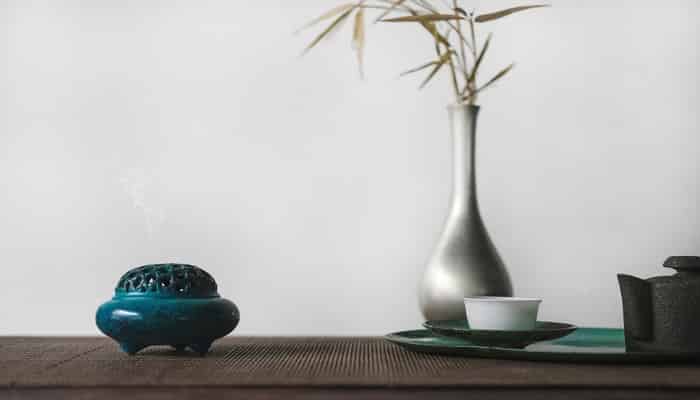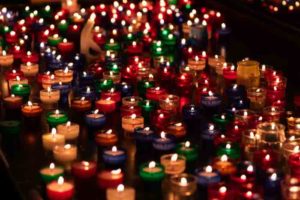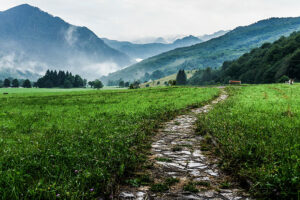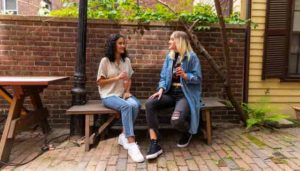IELTS Speaking Part 2: IELTS Cue Card
Talk about a traditional object of your country.
OR
Talk about a traditional product of your country that you bought.
You should say:
What is it?
How is it made?
When did you try it for the first time?
Why do you like it?
Note: You will have to talk about the topic for one to two minutes. You have one minute to think about what you are going to say. You can make some notes to help you if you wish.
Model Answer 1:
Introduction:
Well, I come from a country which is famous for its rich culture and heritage.
What is it?
And there are so many traditional objects which reflect the Indian culture and it is commonly found in most part of the country, is the earthen pot.
How is it made?
Let me tell you what an earthen pot is and how it is made. The earthen pot is a clay pot that is used to store and keep the drinking water cool, and there is no need of any kind of refrigeration, and it is made on the potter wheel by rotating the wheel and giving it different shapes.
Earthen pots come in a variety of shapes and are often painted in different colours, which make them extremely attractive.
Why do you like it?
In past, when there was no option of refrigeration, people often store and keep fresh water in these pots, but even today, when almost every household has refrigerators, people still use the earthen pots, especially in the summer season and the reason behind is the medicinal properties of the water kept inside a pot.
It remains cooler than the room temperature for a long time. At the same time, the water that we drink from an earthen pot is much more nutritious. It really helps to improve digestion and also cures gastro problems.
When did you try it for the first time?
We have been using earthen pots for a long time. I remember when I was hardly 7 year old that was the very first time we purchased an earthen pot.
Unfortunately, I accidentally broke the pot. Since these pots are extremely fragile but the good thing is that these are quite reasonably priced, so one can easily replace it with a new one.
In fact, its such an interesting object of my country that the tourist who come from different parts of the world, they always purchase a small pot on there way back to their country as a souvenir to keep the memories of the visit to India.
Conclusion:
Overall, It is one traditional object of my country which is extremely popular.
Model Answer 2:
Introduction:
India has a diverse and distinct culture that has been developing for thousands of years and varies from region to region. Here is a brief overview of the culture and tradition in India.
India is considered the birthplace of some of the world’s major religions: Buddhism, Hinduism, Jainism and Sikhism. Today, I would like to talk about an old and traditional object that my grandmother used.
What is it? and How is it made?
It is a homemade butter churn. My grandmother bought it when she was young. It contains an earthen pot, a long wooden stick/ wooden blender along a little rope that is used for movement.
When did you try it for the first time?
As I said earlier, my grandmother was always used it to make butter. I remember I was about ten years old when I used it for the first time. I felt tired because it required a lot of physical strength. Grandmother took used it for about 20 to 30 minutes daily.
Why do you like it? and Conclusion:
I like only to watch it, but do not like to use it because it requires a lot of effort. after my grandmother no one in my family was ready to use it, so my father keep it very safe in a glass box as it was the last sign of our grandmother.
Model Answer 3:
Introduction:
- India is rich in tradition and culture.
- It is also very diverse.
- Traditional products are different in different parts of India.
What is it?
- Here I would like to talk about a traditional product which is of Punjab
- Jutti is an Urdu word for a shoe with a closed upper attached to a sole.
- These are traditionally made of pure leather.
- Then it is beaded, threaded, and embroidered in different eye-catching colours.
- It is made by skilled craftsmen.
- Some designs are very intrinsic and delicate.
- Some are just plain or coloured leather.
- I have many Punjabi juttis.
- I wear them very often.
When did you try it for the first time?
- I remember the first time I wore a Punjabi jutti was on my cousin’s wedding two years ago.
- After that, I liked it so much that I started wearing in routine.
- It is very comfortable
- It is the most versatile footwear.
- It is popular among both genders.
- It can be worn every day, on weddings, parties and on festivals.
How is it made?
- It was first introduced by the Mughals and was very popular among the royalty.
- First the raw hide is processed.
- Then it is dyed.
- Then the cobblers make the juttis.
- Final stitching and embroidery is done in the end.
Why do you like it? and Conclusion:
- I like it because it looks beautiful and is also very comfortable to wear.
IELTS Speaking Part 3 : Follow up Questions
Here some examples of follow up questions that you may asked during your speaking part 3 by examiner related to cue card “Talk about a traditional object of your country or Talk about a traditional product of your country that you bought”.
Q1. Describe another traditional product from your country (apart from what you spoke about).
India is a diverse country. There are many traditional products in India. We have earthen pots, ceramic pottery of Jaipur, puppets of Rajasthan, phulkari embroidery of Punjab, hand-knotted carpets of Srinagar and many more.
Q2. What are the benefits of traditional products to locals?
Traditional products keep the locals in touch with their culture and tradition. They also become a source of earning, when tourists show interest in these products and buy them.
Q3. Do you think the government should help in the promotion of traditional products?
Definitely, it should. If governments promotes traditional products, only then these will remain alive, otherwise these products will die and so will our culture and tradition.
Q4. Do you think because of globalization countries are adopting each other traditions?
Yes, as countries know about these traditions, they adopt them. In a way it is good. Diwali is celebrated by many people outside India also. We have also started celebrating Valentine’s Day, Grandparents’ Day, Father’s Day and Mother’s Day etc.
Q5. Why people buy traditional products because of their traditional value or because of they are handmade?
People buy these products for both these reasons. Handmade things have their own charm and only handmade thinks can have the real traditional value. When things are made in bulk using machines, then the whole traditional value of the thing is lost.
Q6. Did the traditional things of the past have more value than the present things?
Yes, of course. We must remember that the things we consider new and modern today will become traditions for the future. So, the traditional things of the past were different and as time passes those things become antiques and so become more valuable.
Q7. Did the traditional things of the past have better quality than the present things?
Not necessarily. The things made today also have good quality. Actually, it depends on the person making those things. There have always been good craftsmen and bad craftsmen.
Q8. Is it necessary to protect traditions?
Yes, of course. Traditions are our roots. They bind us to our past. Without traditions we would feel cut off from our past.
Q9. Do you think teenagers should learn about traditions?
Yes, they should be taught. Otherwise, they will feel cut off from the past. As it is, the teenagers of today are being lured by the global culture and are drifting away from traditions.
Credits
Image : Photo by 五玄土 ORIENTO on Unsplash






